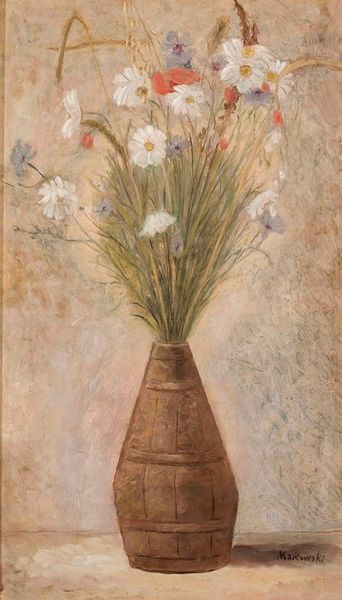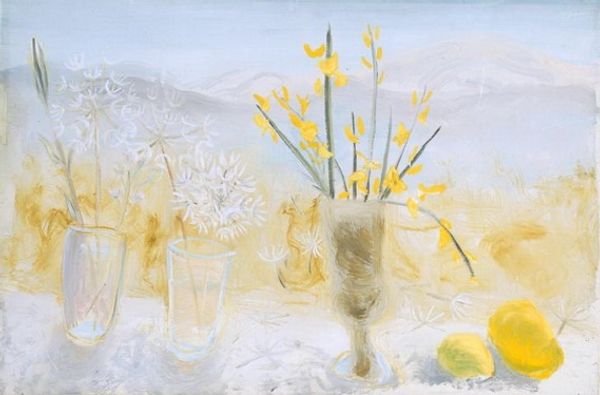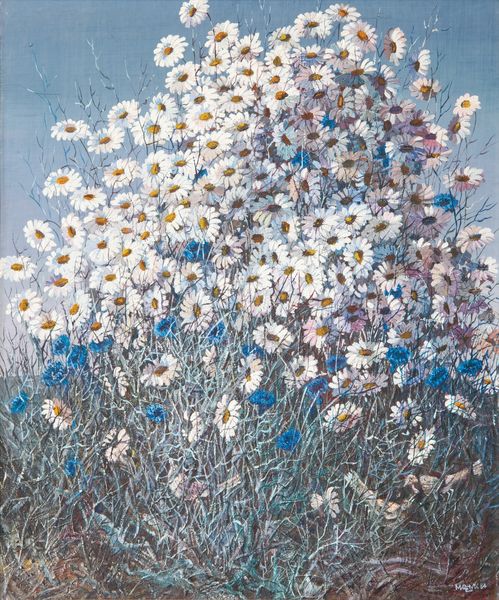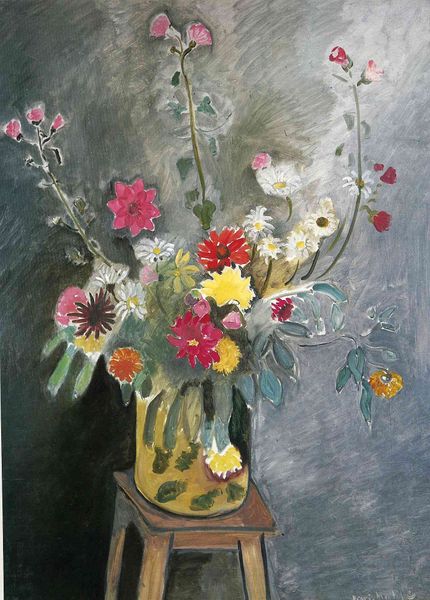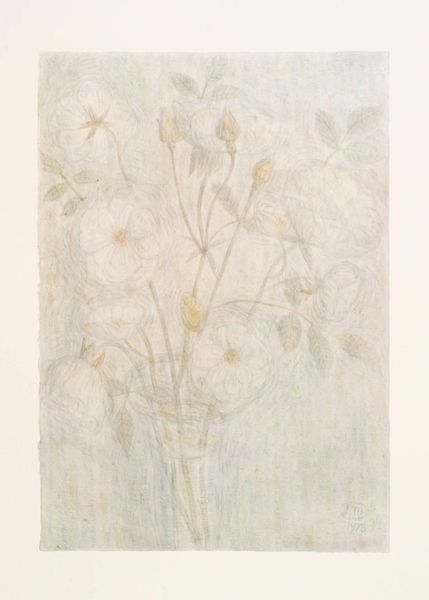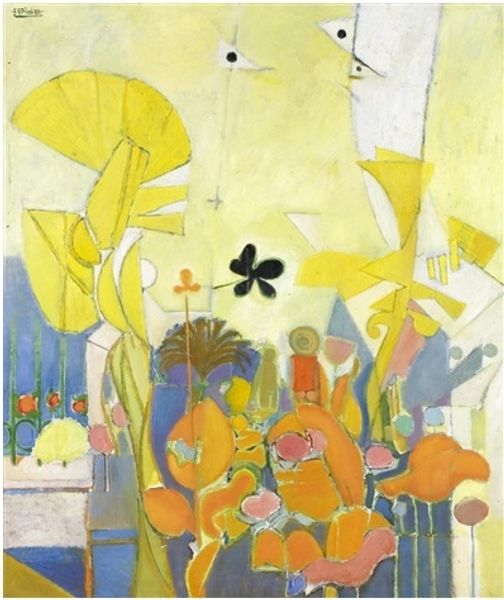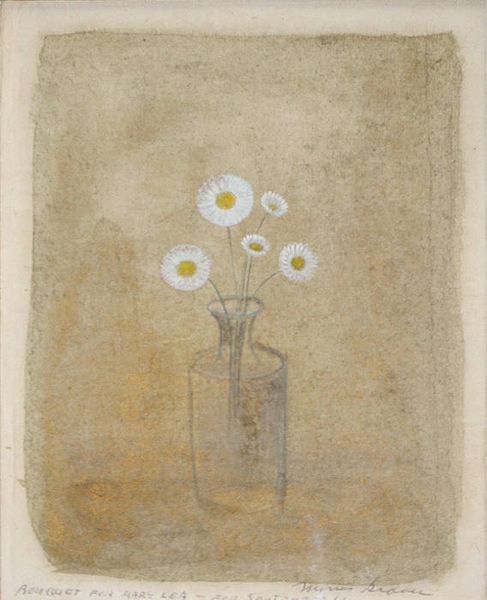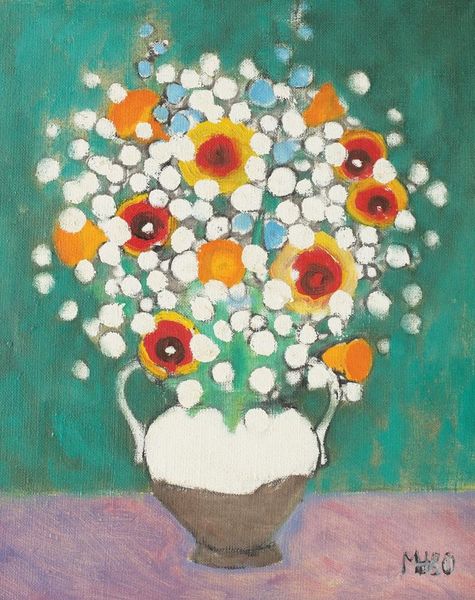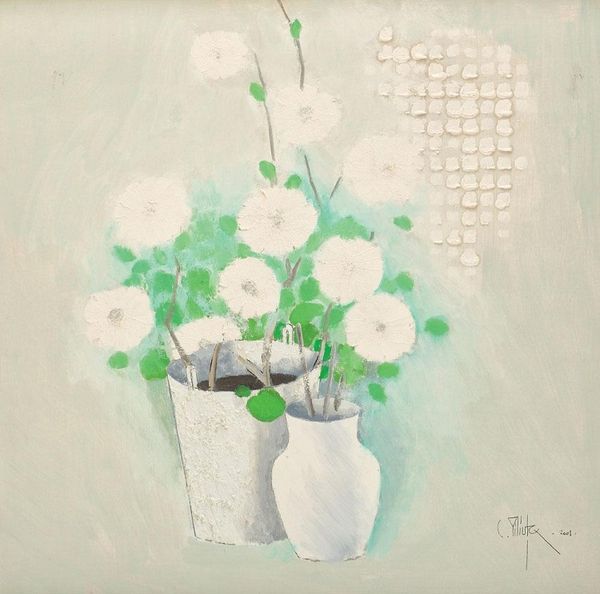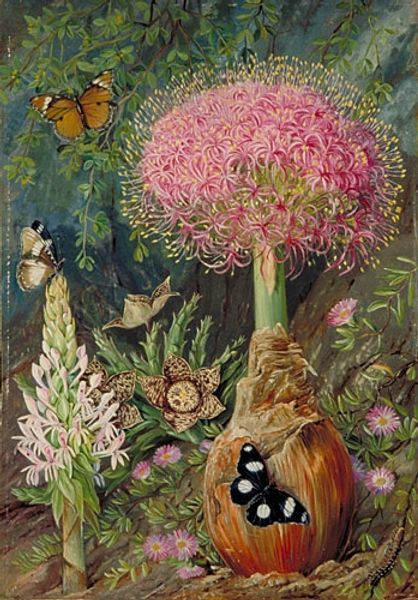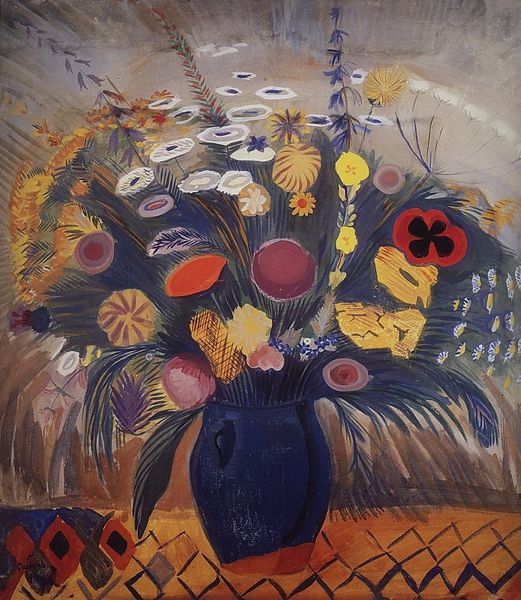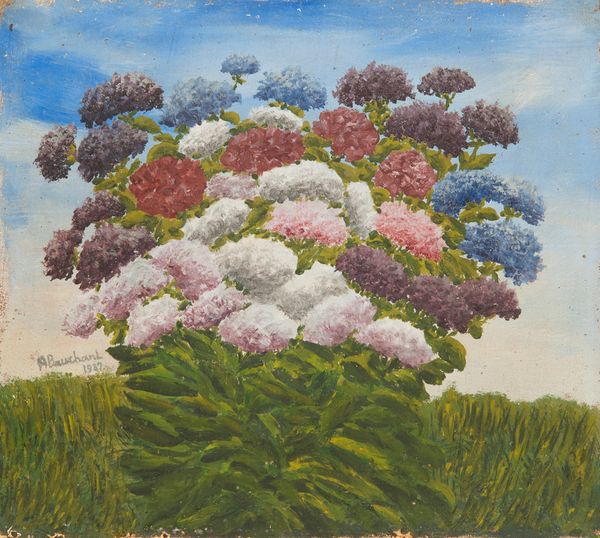
watercolor
#
water colours
#
landscape
#
watercolor
#
ceramic
#
modernism
#
watercolor
#
realism
Copyright: Adolf Dietrich,Fair Use
Editor: So, here we have Adolf Dietrich's "Margeritenstrauss mit Kanarienvogel," painted in 1954, using watercolors. It’s such a wonderfully detailed still life. All those daisies! What stands out to me is the contrast between the almost photographic realism of the daisies and the very simplified, almost naive background. What's your interpretation of that juxtaposition? Curator: The key is situating Dietrich within his historical context. He was celebrated as a ‘naïve’ or ‘outsider’ artist, a term loaded with art-world assumptions about who gets to make ‘real’ art and how it should look. Consider how the institutional art world of the mid-20th century, particularly in Europe, was wrestling with notions of high and low culture. By labeling Dietrich “naive,” were they elevating or marginalizing him? Editor: That's a good point. It’s like they’re simultaneously celebrating his unique vision while distancing him from "serious" artistic movements. But where do you think the flowers come in? Curator: The daisies themselves could be read as symbols of purity and innocence. Placing them with the canary—itself often a symbol of domesticity—within a simplified landscape offers a controlled vision of nature. Ask yourself, how does the careful arrangement of elements here relate to a broader social desire for order and simplicity in the post-war period? Was this simplicity real, or an idealized projection? Editor: It seems so straightforward at first glance, but it is more complex once you dig a little bit into it. Thank you. Curator: The point is to look beyond face value. It makes you think about not just the aesthetic, but the whole socio-political construction of art itself. It always comes back to who decides what’s worth looking at, doesn’t it?
Comments
No comments
Be the first to comment and join the conversation on the ultimate creative platform.
